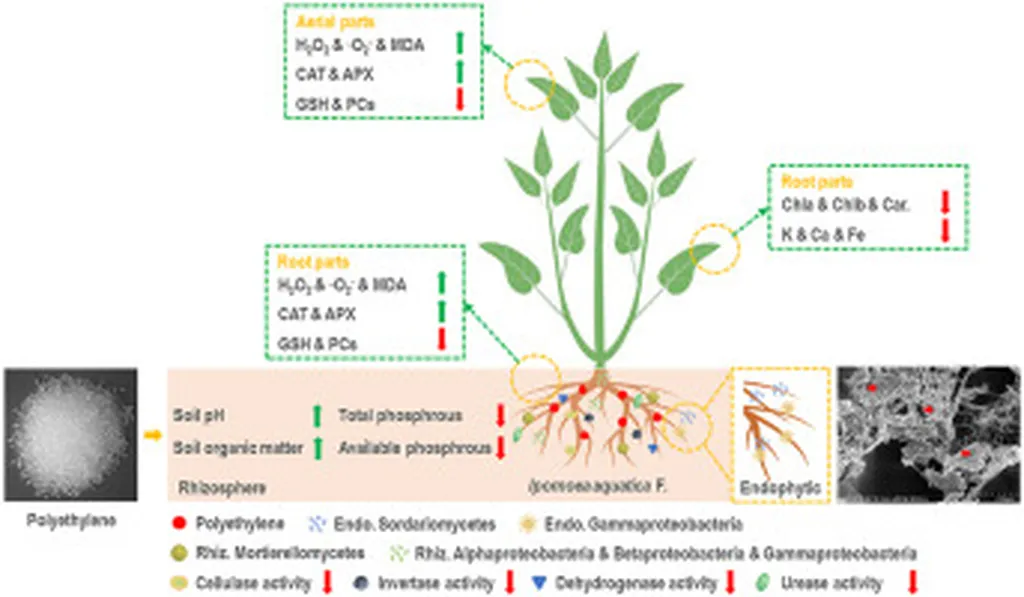In the quest for sustainable agriculture, scientists are turning to the microscopic world for solutions. A recent study published in the BIO Web of Conferences has shed light on the potential of endophytic bacteria to boost the growth of water spinach (Ipomoea reptans), offering a promising avenue for farmers and agritech innovators alike.
Endophytic bacteria, which naturally inhabit plant tissues, have long been known for their growth-promoting properties. However, their specific impact on water spinach has remained largely unexplored until now. Lead author Syafira Reina Anggia from Universitas Muhammadiyah Surakarta, along with her team, set out to change that.
The researchers focused on two bacterial isolates, K10 and K111, derived from the roots of klutuk banana (Musa balbisiana). These bacteria were chosen for their ability to produce indole-3-acetic acid (IAA), a hormone known to stimulate plant growth. The team inoculated water spinach seedlings with these bacteria and monitored their growth over 21 days.
The results were promising. Two key growth parameters—root count and fresh weight—showed significant improvement compared to the control group. “This experiment provided preliminary data on the advantageous endophytic bacteria that enhance plant growth,” Anggia noted. The findings suggest that these bacteria could be harnessed to improve crop yields in a sustainable and eco-friendly manner.
The commercial implications of this research are substantial. Water spinach is a popular leafy vegetable in many parts of the world, and any improvement in its growth could have a significant impact on the agriculture sector. Farmers could potentially reduce their reliance on chemical fertilizers, which are not only costly but also harmful to the environment. Instead, they could use these beneficial bacteria to promote plant growth naturally.
Moreover, the use of endophytic bacteria aligns with the growing consumer demand for organic and sustainably grown produce. As Syafira Reina Anggia explains, “This study opens up new possibilities for sustainable agriculture. By utilizing these beneficial bacteria, we can enhance crop yields while minimizing environmental impact.”
The research also paves the way for further exploration into the use of endophytic bacteria in other crops. If similar results can be achieved with other plants, it could revolutionize the way we approach agriculture. This could lead to the development of new biofertilizers and growth-promoting products, creating a more sustainable and profitable future for the agriculture sector.
In the words of Syafira Reina Anggia, “This is just the beginning. There’s so much more to explore in the world of endophytic bacteria and their potential benefits for plant growth.” As we continue to uncover the secrets of these microscopic allies, the future of agriculture looks increasingly bright and sustainable.

